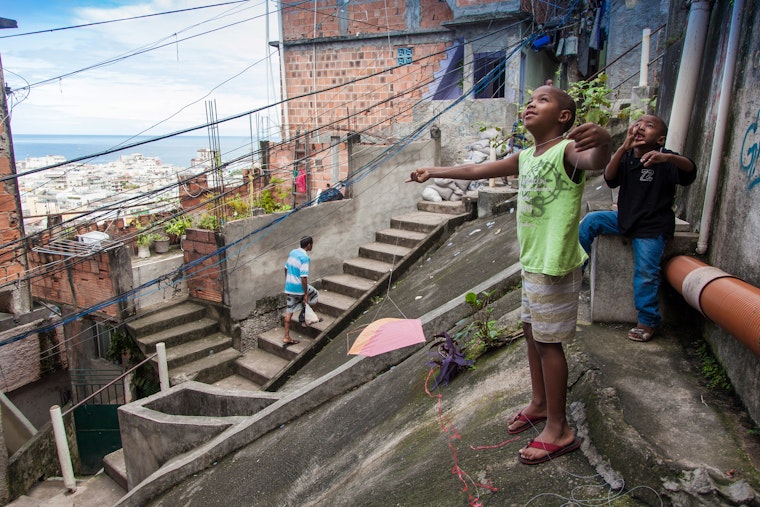Brazil, Homicide Capital of the World, Tackles Violence against Children
By Robert Muggah

In the state of Rio de Janeiro, where a security force of 85,000 is patrolling to keep the peace for the Summer Olympics, only 45 percent of children report feeling secure in the place where they live, according to a new study by the Igarapé Institute.
It’s not hard to see why.
Brazil is the homicide capital of the world. Close to 60,000 people were murdered in the country last year—most of them young men—and every day roughly 28 adolescents and children are killed. The violence affects some more than others. The homicide rate for black boys, for instance, is four times higher than the rate for similarly aged white children.
Yet given the monumental scale of the problem, there is surprisingly little discussion about the ways in which young people are affected by violence. Part of the problem is that violence involving young children is often considered normal, even acceptable. There is also comparatively little reliable data or analysis about how young Brazilians perceive their security environment.
Even the most basic questions go unanswered. Do children feel safe? What do they consider to be their biggest threats? National censuses and crime surveys rarely generate information on these subjects. But recently, a suite of new digital tools has begun emerging to help report on violence against children, including Proteja Brasil, an app that facilitates the reporting of violence against children and adolescents.
In order to help fill this knowledge gap, the Igarapé Institute and its partners developed the Child Security Index (CSI), an app that records the experiences of adolescents and children in low-income settings. The CSI is designed to be used by government authorities, private sector entities, and NGOs. It consists of at least 30 questions. Surveys are conducted using the mobile app, and the data is reproduced on an administrative dashboard.
With training provided by the Igarapé Institute, collaborators have generated an overview of how kids in particular areas interpret their safety. The index allows children to explain the way violence affects their day-to-day lives. By better understanding the dimensions of the problem, it is then possible to prioritize homicide- and violence-reduction policies and programs and more accurately measure their impact.
So far, the CSI has been tested in 14 cities in Brazil, including Rio de Janeiro. We think it has even wider application, however. After all, Brazilian youth are not the only ones experiencing prolific rates of lethal and nonlethal violence. Roughly one in five homicide victims around the world are under the age of 20, and other forms of violence often go unnoticed, including sexual violence, physical abuse, and bullying.
The CSI can be used as an advocacy tool to build awareness, but it is also an operational platform that measures results. We have helped our partners use the CSI to gauge the effectiveness of their primary and secondary school programs, and other organizations intend to use the index to measure whether their community development initiatives are improving children’s sense of security.
The index is a powerful tool to track change while also empowering children to speak out. With many partners—including World Vision International, the Bernard van Leer Foundation, Oi Futuro, Google Brasil, and Bola Pra Frente—we recently launched a campaign that coincides with the Olympic Games to trigger debate on the challenges of violence against children. Using the hashtag #MakingChildrenSafer, the Igarapé Institute is encouraging technology-enabled solutions to address these challenges.
Sadly, in Brazil and so many other parts of the world, outrageous levels of violence are tolerated and normalized. The index has the potential to provoke new thinking on the issue, particularly in regards to children. According to data from the CSI, despite the challenges they face, 86 percent of adolescent and child respondents have a positive outlook on the future. The least we can do is help make sure they safely move toward it.
The Igarapé Institute is a grantee of the Open Society Foundations.
Robert Muggah is the research director of Igarapé Institute and the principal of the SecDev Group.